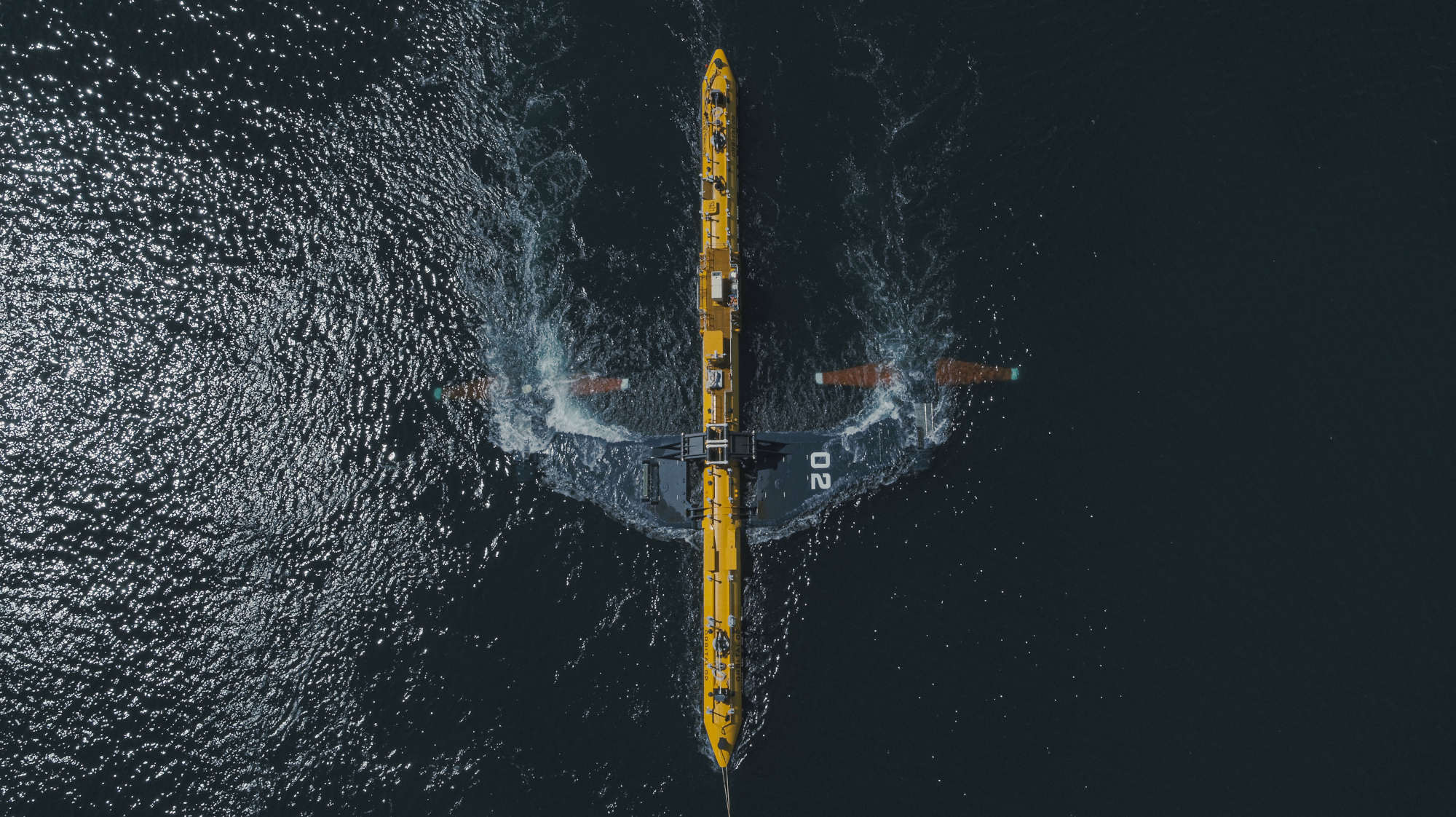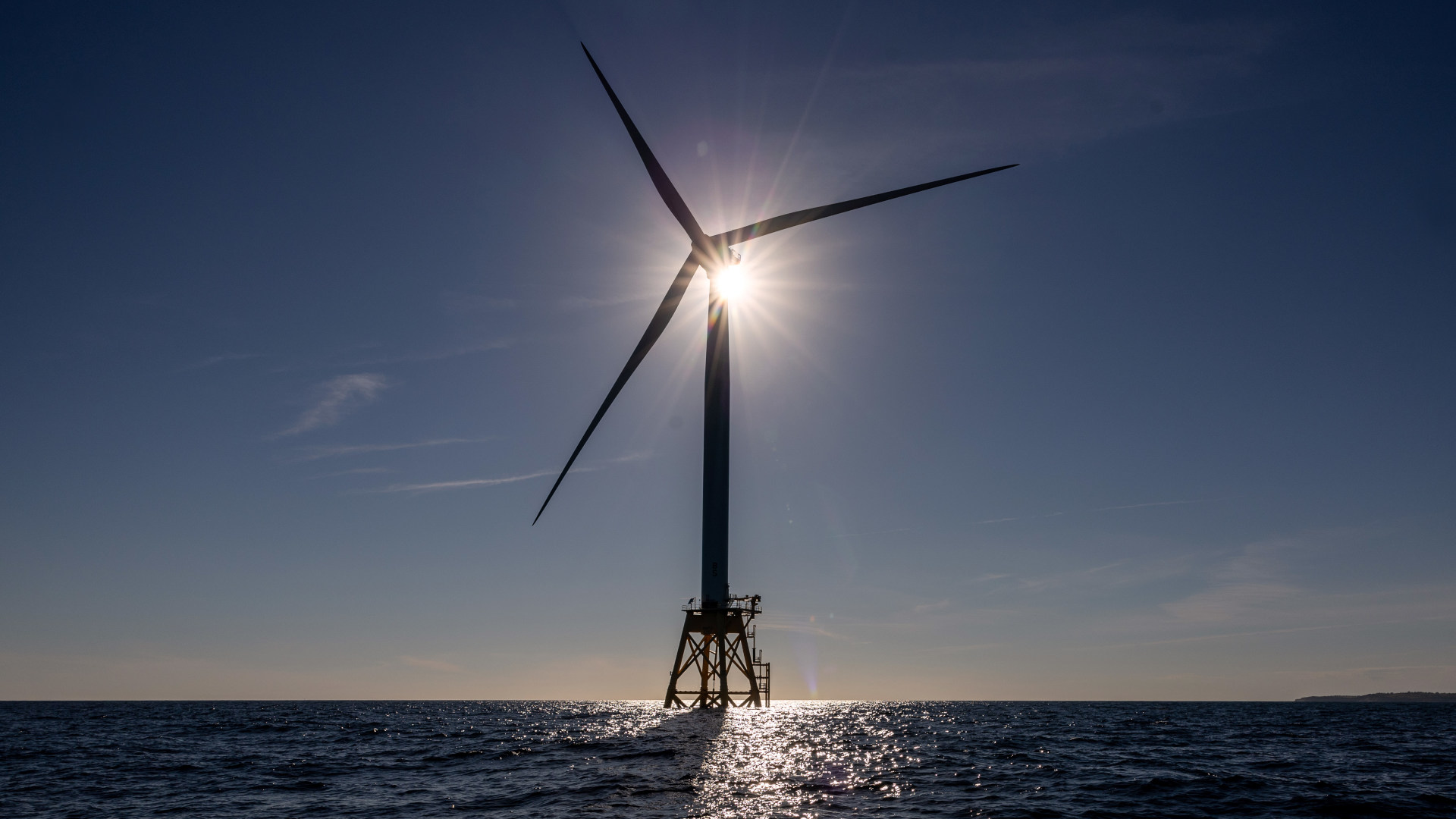Testing the Waters: Scotland Surges Ahead on Ocean Power
By a quirk of geography, the Orkney islands, located off the northern tip of Scotland, are unusually well positioned to bear witness to the ocean’s might. On the archipelago’s western shores, waves crash relentlessly against the rocks. And within its numerous channels, the tides push an enormous volume of water from the North Atlantic to the North Sea and back again, twice every day, squeezing between and around the islands of Rousay, Westray, Eday, and a myriad of other ones.
No wonder the European Marine Energy Center, one of the world’s leading agencies for developing and testing wave and tidal power technologies, chose to set up shop here; the nonprofit agency hosts both wave and tidal power testing facilities on Orkney.
EMEC’s wave-energy testing site is at Billia Croo, located on the western shore of Orkney’s largest island. On a relatively calm day last spring, Lisa MacKenzie, EMEC’s marketing and communications manager, surveyed the gray waters from the Billia Croo site. “We get an average of 2-to-3-meter wave height,” she said, or roughly 6.5 to 10 feet. “But we’ve had waves of over 20 meters” — more than 65 feet — during “really extreme conditions over the winter.”
The surrounding landscape is windswept and nearly treeless. Were one to sail directly west from this spot, “the first bit of land that you would hit is Canada,” MacKenzie said.
EMEC was founded in 2003 following a recommendation by the U.K. House of Commons Science and Technology Committee (now known as the Science, Innovation, and Technology Committee). To date it has received about $53 million in public investment; its funders include the European Union, the U.K. government, the Scottish government, and the Orkney Islands Council. More than 20 corporate clients have used EMEC’s facilities, and more ocean energy converters have been tested at the center than at any other site in the world.
The Billia Croo facility opened in 2004 on land rented from a local farmer. An array of transformers, housed in green bins each the size of a compact car, lines the perimeter of the site’s small parking lot. A modest stone-wall hut, which blends into the landscape, houses the facility’s control center and is filled electronic switching equipment. The testing berths are offshore, where EMEC’s clients can test all manner of wave-energy conversion devices, with cables running along the seabed to the control hut. Any electricity produced can also be fed directly into the U.K. national grid.
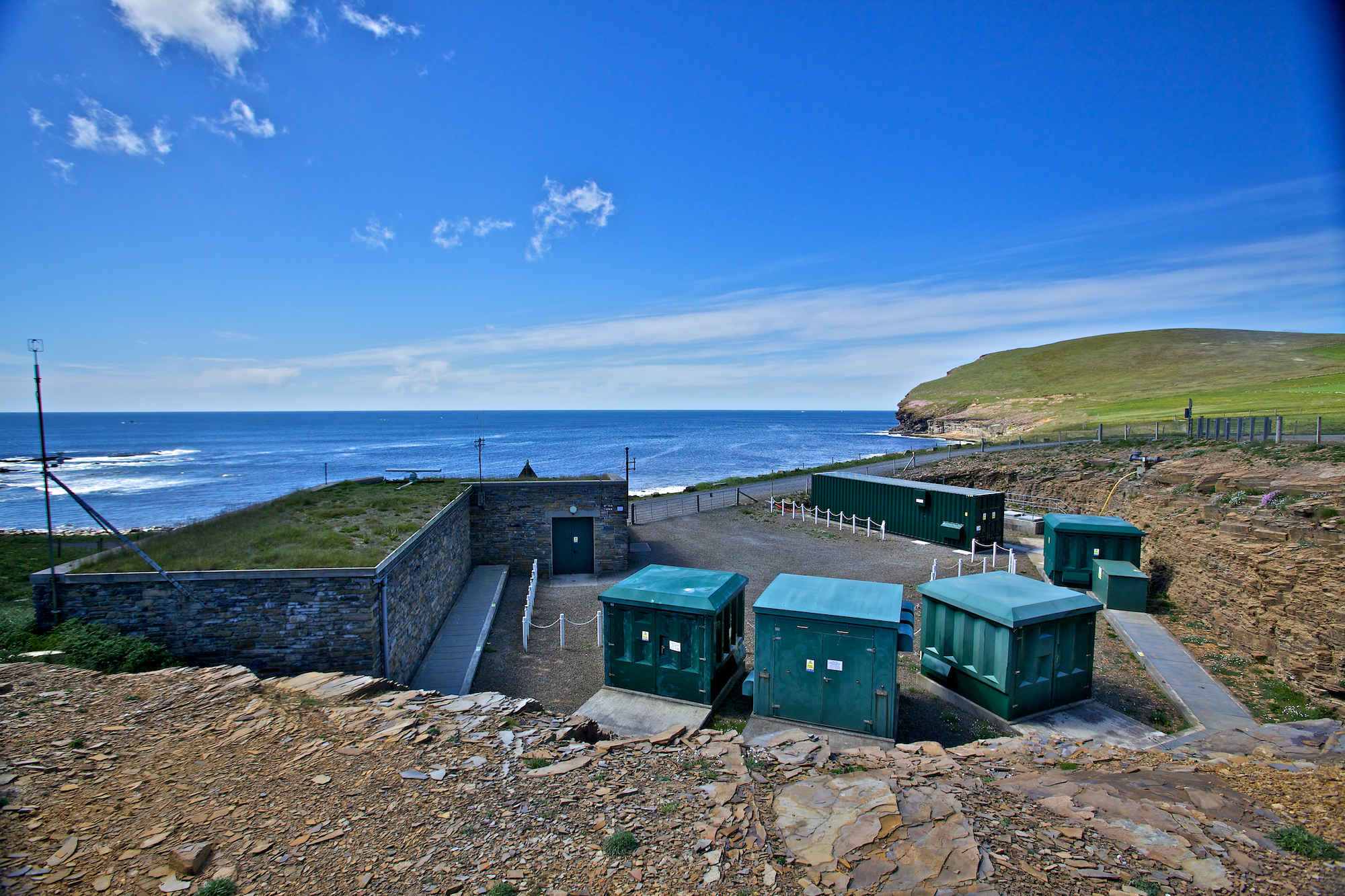
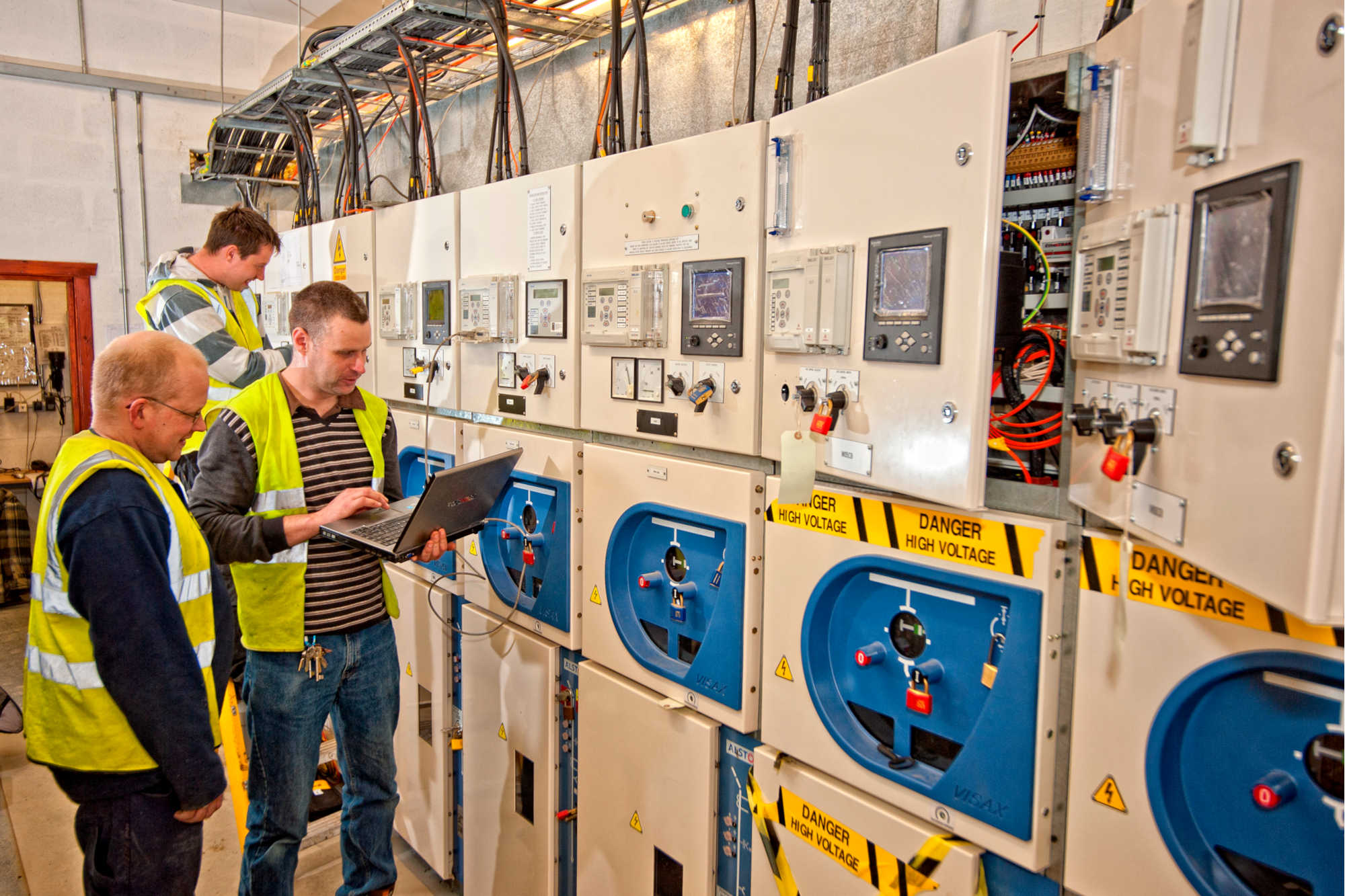
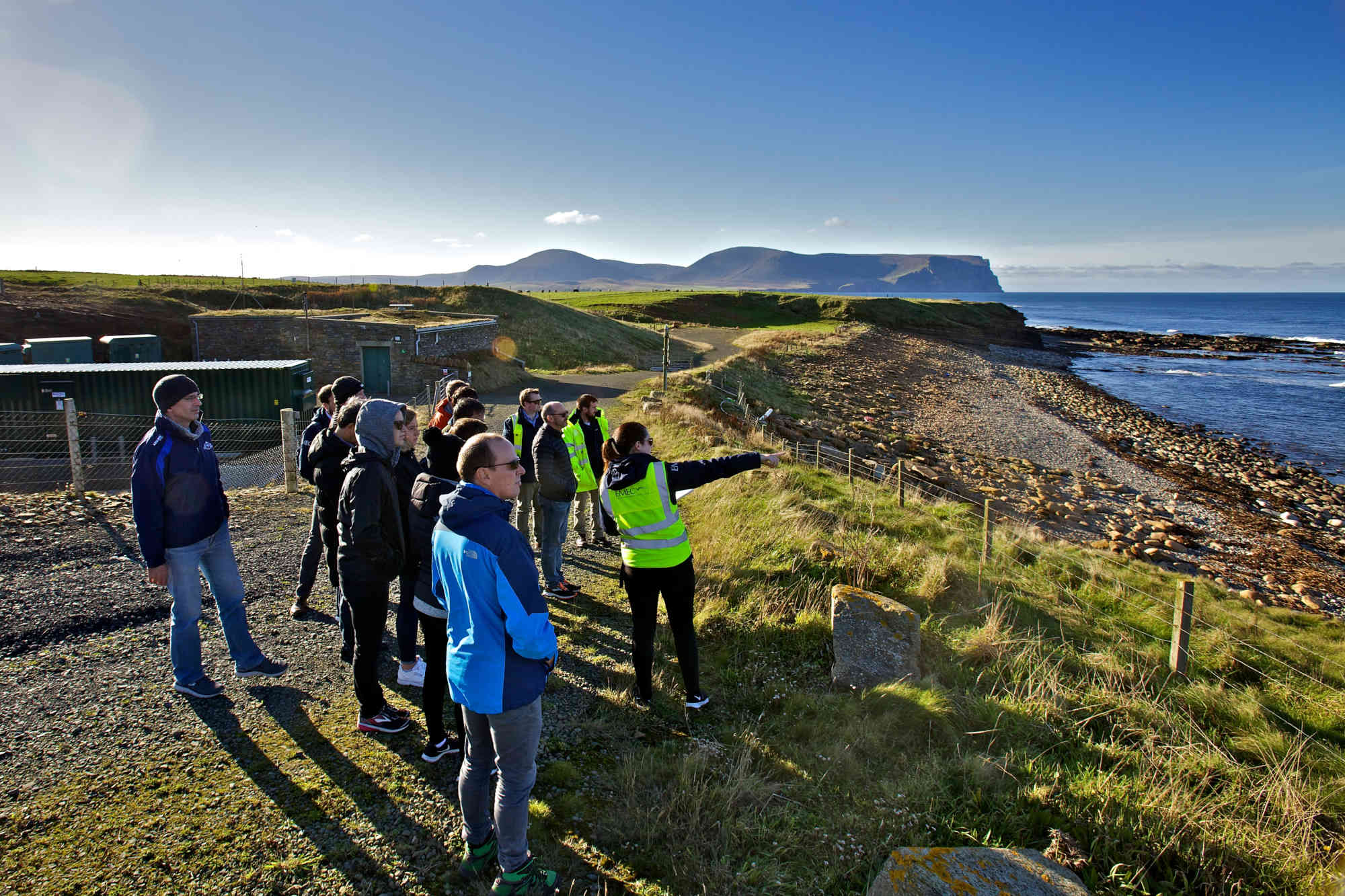
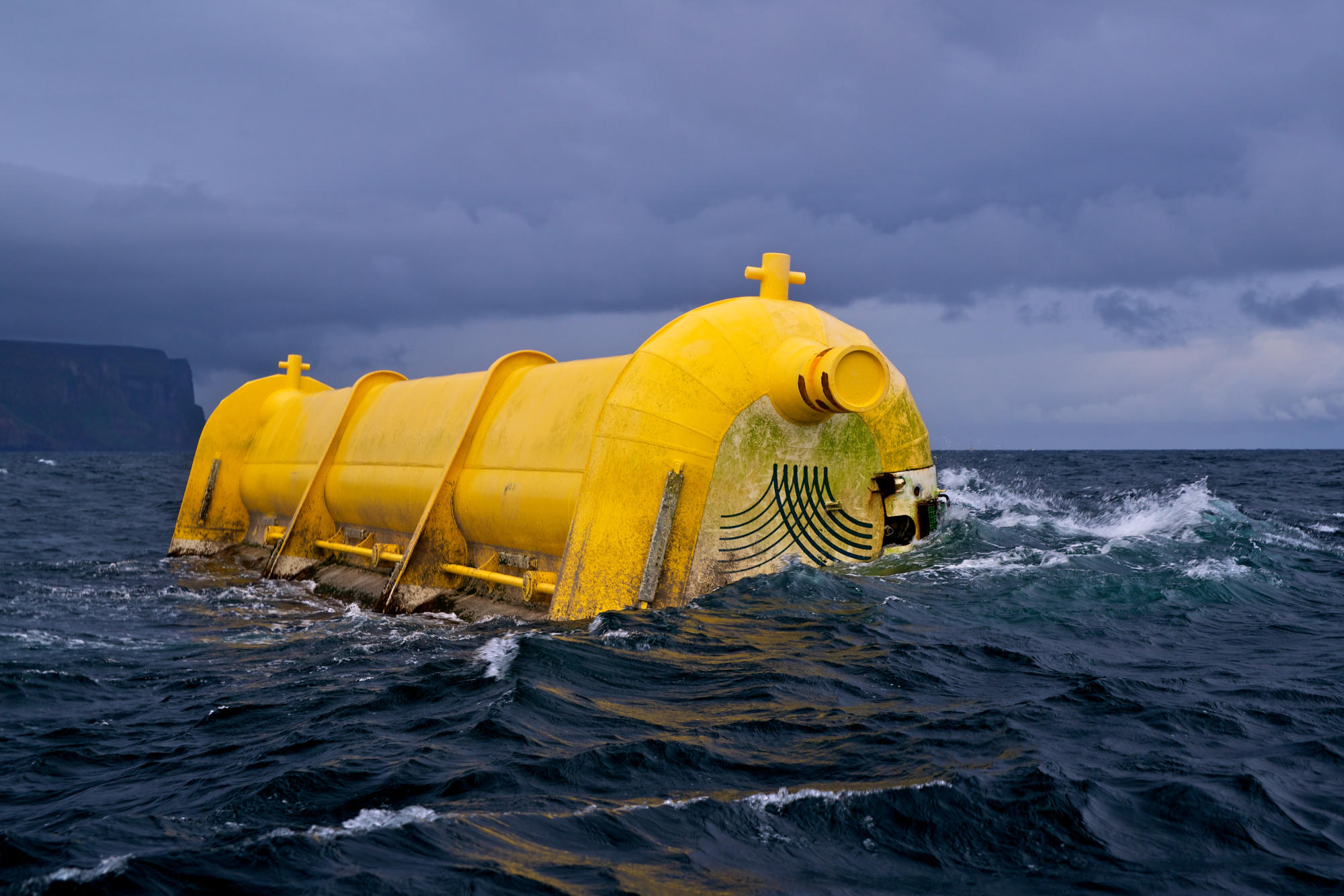
Waves, like the wind that produces them, are not a constant; both are inherently variable. And they are linked: Wind imparts energy to the ocean, which then dissipates as waves over a longer time scale. As MacKenzie puts it, waves are the aftermath of wind.
Harnessing the energy of waves is one way to draw power from the oceans; another is to exploit the energy of the tides. Of the two energy sources, tidal is more constant, given the tides’ regular-as-clockwork response to the push and pull of the moon and sun.
EMEC runs a grid-connected tidal energy test facility located off the southern tip of Eday. “We get a peak tidal flow over 4 meters per second, which is about 8 knots,” MacKenzie said. “So about half a billion tons of water passes through there, every hour, at peak tide.”
As MacKenzie puts it, waves are the aftermath of wind.
And that flow is comparatively predictable — far more so than, say, wind or solar, which are stymied by calm or cloudy conditions. “We can predict the tides 200 years into the future,” MacKenzie said. “Which means that we can predict how much power can be derived from the tides, 200 years into the future.”
There is no question that the planet’s oceans contain enormous amounts of energy. According to a 2021 study published in Proceedings of the Royal Society A, tidal stream energy alone could provide the equivalent of 11 percent of the U.K.’s annual electricity needs. Power from the oceans is “the largest untapped resource of renewable energy on the planet right now,” said Rémi Gruet, CEO of Ocean Energy Europe, the world’s largest network of ocean energy professionals.
The question is, can that energy be harnessed economically — or is the idea of pulling watts from the water doomed to be a mere sideshow in the quest for green energy? After decades of testing at tidal energy facilities like EMEC and other smaller-scale facilities around the globe, only a handful of commercial wave and tidal power facilities are online, and they contribute a miniscule amount to the world’s energy production. Even in Orkney, a leader in the quest to extract energy from the ocean, wave and tidal power account for just a fraction of the islands’ energy consumption.
“We can predict how much power can be derived from the tides, 200 years into the future.”
Notably, wave and tidal lag behind other forms of renewable energy. “It’s fair to say that we’re nowhere near a wind or solar industry at this point,” says Carrie Schmaus, a marine energy technology manager at the U.S. Department of Energy’s Water Power Technologies Office.
Still, for the technology’s supporters, the ocean is seen as a virtually limitless source of energy waiting to be tapped, if only governments step up with the public investment needed to kick the industry into high gear. “There’s an energy resource there,” says Andrew Scott, CEO of Edinburgh-based Orbital Marine Power Ltd. “The question is, what are you prepared to pay to extract that energy?”
On paper, the power of the world’s oceans is indisputable: Tidal stream energy is estimated to represent a global resource of some 1,200 terawatt-hours (a terawatt is one trillion watts) per year, while wave power is even more abundant, adding up to almost 30,000 terawatt-hours per year — enough, in theory, to meet all of humanity’s energy needs 10 times over.
As promising as tidal and wave energy may seem, the list of obstacles to widespread adoption is significant: the formidable cost of scaling up the technology; bureaucratic hurdles; environmental concerns, including possible effects on fish and sea mammals; and, in the case of tidal power, geographical restrictions. There are also fears that rising sea levels could substantially alter ocean movements in a way that could impact current or planned tidal power facilities. In a 2022 paper published in the journal Renewable and Sustainable Energy Reviews, Danial Khojasteh and his co-authors noted that “long-term management decisions associated with harnessing the potential of tidal energy schemes within estuaries should be made with caution.”
The question of cost is paramount. Even though the cost of tidal and wave energy may be dropping, the cost of wind and solar are dropping even faster, said Brian Polagye, a University of Washington mechanical engineer who studies marine renewable energy. That means tidal and wave energy can be seen as succeeding and failing at the same time.
“Until your price comes down to the point where you’re competitive with other forms of generation — either because you’re directly competitive, or you’re being subsidized until you get to that point — the technologies really can’t take off,” Polagye said. Nonetheless, he added, “I do feel these are technologies that have a long-term role to play in our energy systems.”
Schmaus, at the Water Power Technologies Office, describes wave and tidal power as a nascent industry (as did others interviewed for this story). By way of comparison, she pointed out that in the early days of the wind power industry, all manner of turbine designs were tested. “And then at some point that technology converged,” she said. “Now we have the three-bladed turbine we all know and love. Marine energy is still in that ideation kind of area. We have not had technology convergence yet.”
For the technology’s supporters, the ocean is seen as a virtually limitless source of energy waiting to be tapped.
One of her department’s goals, she says, is to learn from small-scale demonstration projects, scale up designs, and bring down costs. This scaling-up is just what Scott’s Orbital Marine is trying to achieve in Orkney. They’re the company behind the O2 tidal stream energy generator — the world’s most powerful such device — located in the Fall of Warness, south of Eday, and connected to the grid via EMEC’s tidal energy test site. (MacKenzie described the project as “one of our biggest success stories.”) The O2 is a 240-foot-long structure shaped like a submarine (though it stays on the surface), with two submerged arms, each supporting a twin-bladed turbine. In an interview in a cavernous exhibition hall at the annual All-Energy conference in Glasgow last spring, and later by email, Scott spoke of his vision for the company, and the potential of tidal stream power. He said that Orbital Marine hopes to add another six turbines to the Fall of Warness site over the next few years, and, in time, perhaps another dozen.
Scott acknowledges the forbidding technical challenges — especially the difficulty of designing machinery that can withstand seawater’s salt and grime for months or years on end. And he has seen his share of unrealistic proposals over the years. At times “it was a bit of a joke,” he recalled. People saw how much traction wind energy was getting, he says, and figured wind’s success could be readily duplicated beneath the waves.
“People would say, ‘Just go and ‘marinize’ it, and it will be equally successful in the tidal application,” he continued. “It was as naïve as that.”

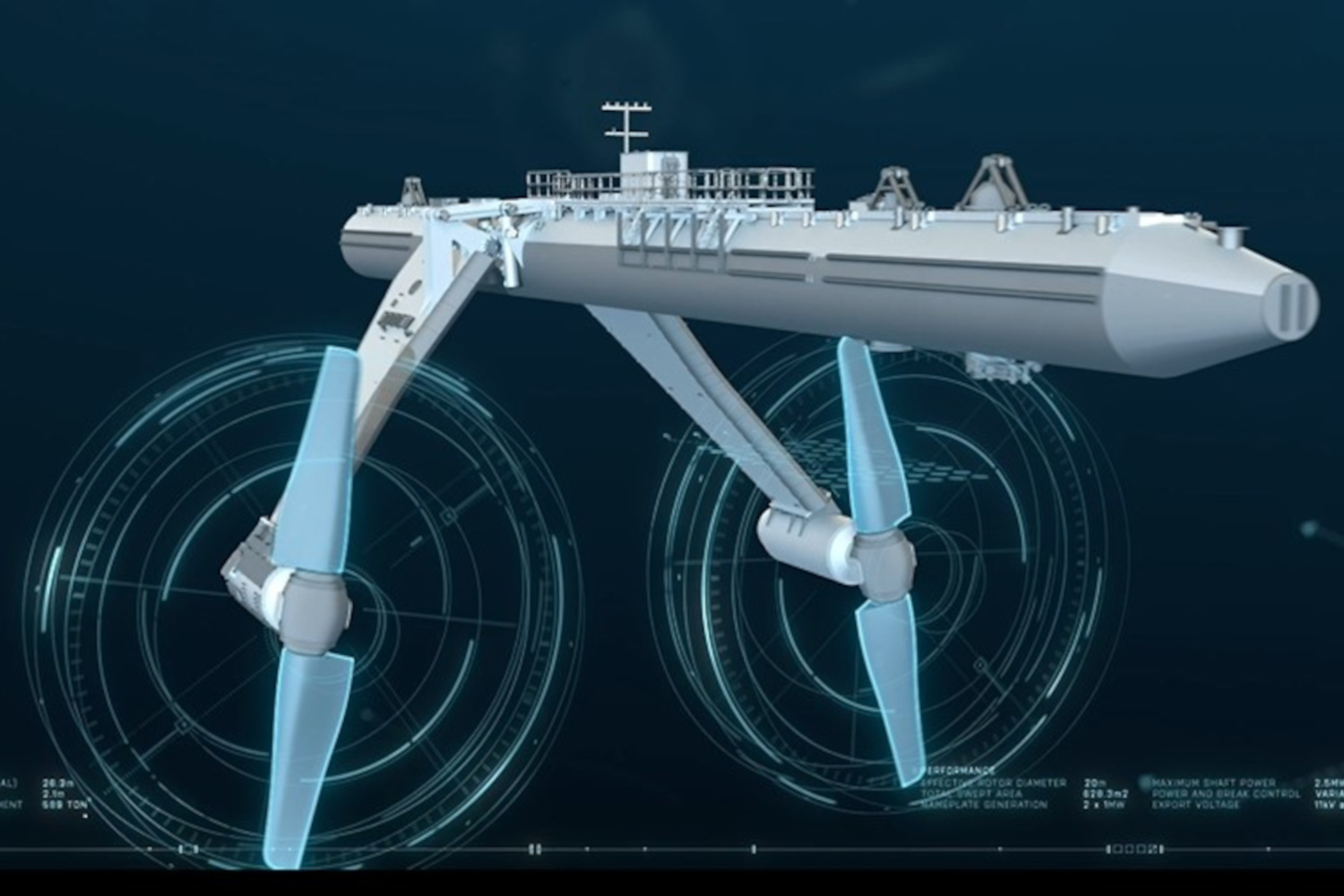
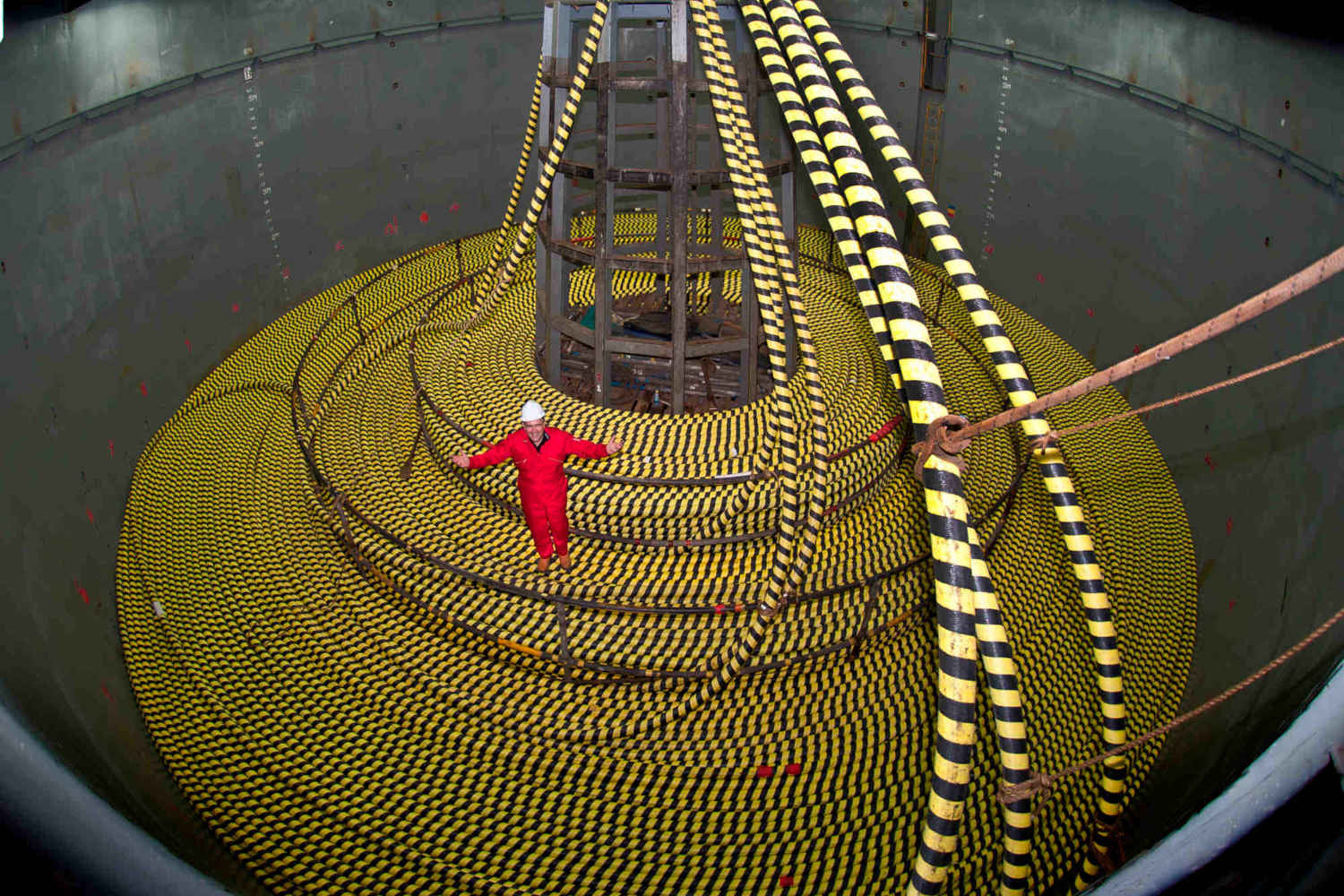

But many of those early challenges have been overcome, Scott said. He noted that O2 is currently providing about 10 percent of Orkney’s electricity, enough to power about 2,000 homes. Because the islands are sparsely populated, and rich in wind energy, Orkney actually produces more energy than is needed locally, which means the islands are already a net contributor to the U.K. grid — and some of that energy comes from O2. Scott said he foresees Orbital Marine generating about $17.5 million from electricity sales per year, over the turbine array’s projected 20-year life. “We’re effectively at that critical stage where we start to grow commercial revenues and profits,” Scott said.
Of course, most parts of the world are not blessed with Orkney’s extreme tidal flows. “It is niche,” Scott acknowledged. “But where it does exist, it represents a phenomenally dense form of renewable energy. Because water is 800 times the density of air.”
While some regions have more powerful tides than others, waves can be found pretty much everywhere that ocean meets land. During a visit to the FloWave Ocean Energy Research Facility on the campus of the University of Edinburgh, a crew from a company called Mocean Energy tested a floating wave-energy converter in a massive circular water tank, some 80 feet across. Paddles along the perimeter of the tank create waves that strive to mimic the conditions of the open seas.
So far, there’s no one preferred way to extract energy from waves — just as there’s no one preferred way to build a tidal stream turbine — so various designs are being tested. The one Mocean was testing uses a simple electrical generator to convert the kinetic energy of the waves into electricity. As Mocean’s converter bobbed in response to the waves, Chris Retzler, the company’s technical director and co-founder, spoke of the path to commercialization, saying he hoped to have a product on the market in 12 to 18 months, and “a much larger-scale, grid-connected machine” in three to four years.
“People would say, ‘Just go and ‘marinize’ it, and it will be equally successful in the tidal application. It was as naïve as that.”
For now, both wave energy and tidal energy lag behind wind in terms of investment and commercialization, but the gap may be closing, Retzler said. “The wind industry, of course, has been phenomenally successful — but it started in much the same way, with small-scale experimentation, gradually building up,” he says. “And we’re following a similar pattern here. We learn by doing.”
Retzler also noted that there is a natural symbiosis between wave energy, with its long-term dependability, and wind and solar, which have much greater hour-to-hour and day-to day fluctuations. “The ocean is storing wind energy over time,” he said. “Waves take a while to build up, and then a long while to decay. That smooths out the production of energy. So wave energy can provide a more stable contribution, and therefore can fill in the gaps that are left by wind and solar.”
The United States has not traditionally been a big player in ocean power technologies, though that may be changing. An established testing facility known as PacWave North, located off the coast of Oregon, will soon be joined by PacWave South, a larger facility now under construction in deeper waters south of Newport. PacWave, funded by the Department of Energy, the State of Oregon, and other public and private entities, bills itself as the first pre-permitted, utility-scale, grid-connected, open-water test facility in the U.S.
Burke Hales, an oceanographer at Oregon State University and PacWave’s chief scientist, describes PacWave as conceptually similar to Scotland’s EMEC, which was one of PacWave’s design partners. “PacWave will be bigger, [with] more total power capability, more berths, more individual devices,” he says. Hales cites figures from the Department of Energy that suggest wave power could meet 15 percent of the nation’s electricity demand.
While the Oregon coast is synonymous with pounding waves, other locations may be better suited to small-scale projects that take advantage of the local geography. For example, in the village of Igiugig, in southwestern Alaska, there’s a demonstration project that draws energy from the estuary of the Kvichak River, via underwater turbines. That’s seen as a vast improvement on the current situation, in which the community trucks in diesel fuel at great cost.
And other U.S. projects may be on the horizon. In 2022, the Department of Energy pledged $35 million in funding “to advance tidal and river current energy systems” in a move that represents the largest such investment in the nation.
Back in Orkney, a company called SAE Renewables announced last winter that they’d hit the milestone of producing 50 gigawatt-hours of electricity with their tidal stream array in the Pentland Firth, the strait that separates Orkney from the Scottish mainland. Further north, in Shetland, Nova Innovation added a sixth turbine to its tidal array last year, which has been powering homes and businesses in the area since 2016.
Across Europe, some 2.2 megawatts of tidal stream capacity were added in 2021, up from just 260 kilowatts the year before. By comparison, Europe installed more than 17 gigawatts of wind power capacity in 2021 (87 percent of them on-shore). By 2022, wind accounted for well over a third of Europe’s energy consumption.
Tidal stream and wave power are not the only ways to extract energy from the oceans. In estuaries or bays with high tides, tidal barrages are another option, a practice dating back as far as 619 A.D. The idea is simple: Find an inlet with significant tides, and build a barrier with sluices that can open and close (similar to a traditional hydroelectric dam). Open the valves as the tide comes in, then direct the water through turbines as the tide goes out. So far, tidal barrages have historically seen more commercial use than tidal stream projects, notably in France (the world’s first commercial tidal power project, on the estuary of the Rance River, dates from 1966), and in South Korea.
As with tidal stream power, tidal barrages could be a natural fit in specific environments. For example, as low-lying countries like the Netherlands and Belgium look to build dikes and barriers to protect against rising ocean levels, tidal barrage generators may be a natural addition to already-planned projects. There is concern, however that tidal barrages can impact salinity and sediment levels and disrupt coastal ecology.
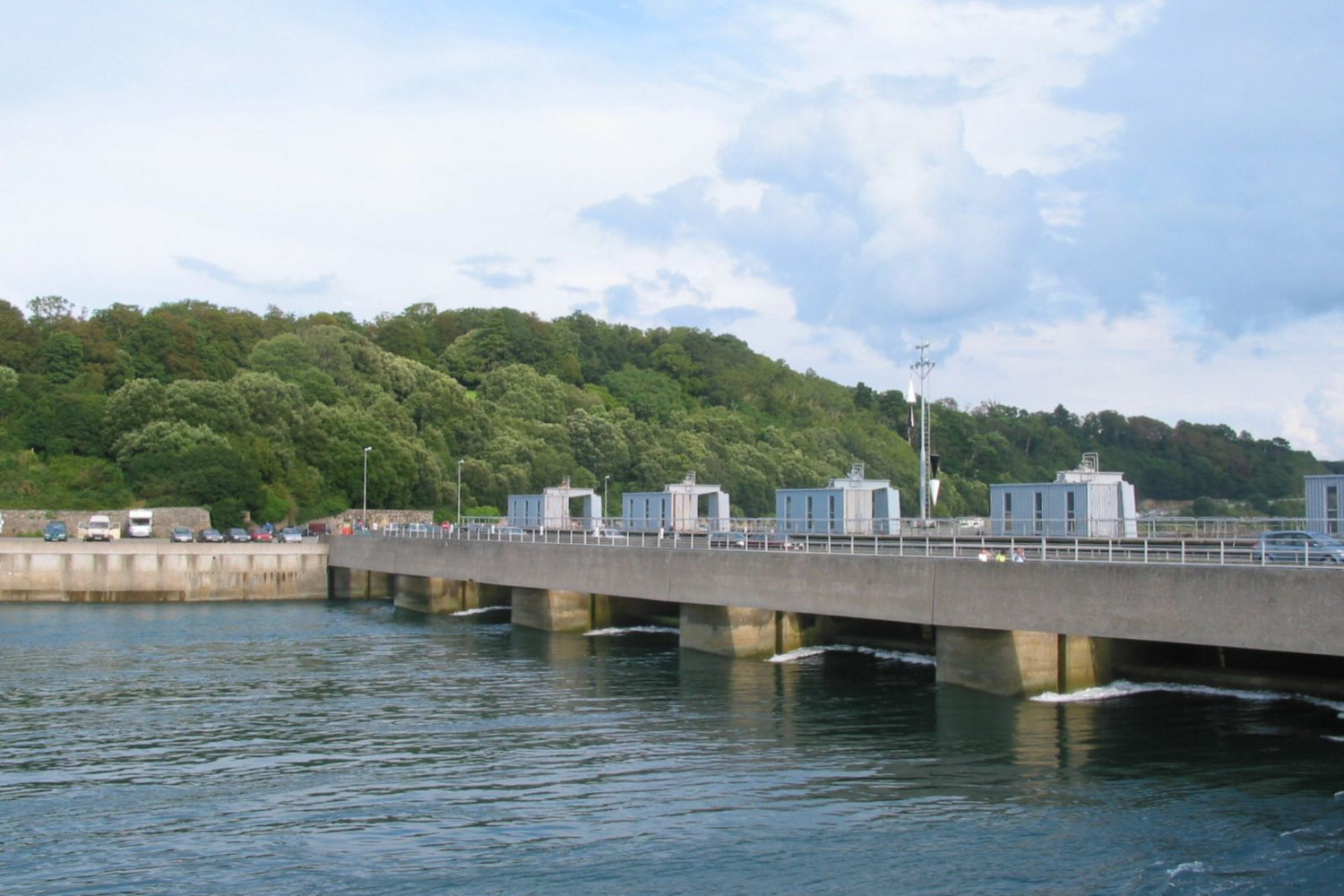

Interestingly, the spot with the world’s highest tides — the Bay of Fundy, which separates the Canadian provinces of New Brunswick and Nova Scotia — has also seen the most disappointment. The volume of water that whooshes through the bay twice each day could, on paper, generate up to 2,500 megawatts of power — roughly equivalent to two large nuclear reactors, enough to meet Nova Scotia’s electricity needs.
But efforts to harness those tides have been fraught. A tidal barrage power station opened on the bay in 1984, but ceased operations in 2019 following technical problems and concern over harm to fish in the bay. Tidal stream projects have been attempted in the bay as well, but have likewise struggled. Last year, a company called Sustainable Marine Energy Canada pulled the plug on its floating tidal turbine platform in the bay after five years of testing and $45 million in investment, citing bureaucratic barriers put in its way by the Canadian government. The company declared voluntary bankruptcy last spring, and in November one of its floating turbine platforms broke free from its mooring and ran aground on the bay’s south shore.
One thing industry insiders agree on is that, for all forms of wave and tidal energy, the path to commercialization requires significant public investment. A 2019 study pegged the cost of tidal energy for one commercial-scale project at $130 to $280 per megawatt-hour, compared to $20 to around $40 per megawatt-hour for wind. But according to Scott at Orbital Marine, it’s misleading to speak of tidal power as being expensive and wind and solar as being cheaper, because so much more investment has been pumped into the latter compared to the former. The green energy sector “has all this legacy background in terms of state intervention and subsidy,” he said. “And the whole thing is structured around taxation and subsidy.”
The path to commercialization for ocean energy projects can seem like a paradox, said Polagye. “Economies of scale occur because you’re building a lot of things,” and “you tend to build a lot of things because they’re the most cost-effective thing to build,” he said. “So it’s a chicken and egg problem, right?”
“It took the wind industry 20 years to get commercial and 40 years to get cheap, between the 1980s and today, so we are still well ahead of the curve.”
Gruet similarly sees the supposed lagging-behind of wave and tidal power as the result of a lack of public investment. “The industry has not received any subsidies in any shape or form in a similar way that the wind or solar industry have received in the early stage of their development,” he said. “And that has slowed down our development tremendously.”
He added that the cost of tidally generated power is already on par with that for floating offshore wind platforms. “So tidal and wave are not lagging behind,” he said. “It took the wind industry 20 years to get commercial and 40 years to get cheap, between the 1980s and today, so we are still well ahead of the curve.”
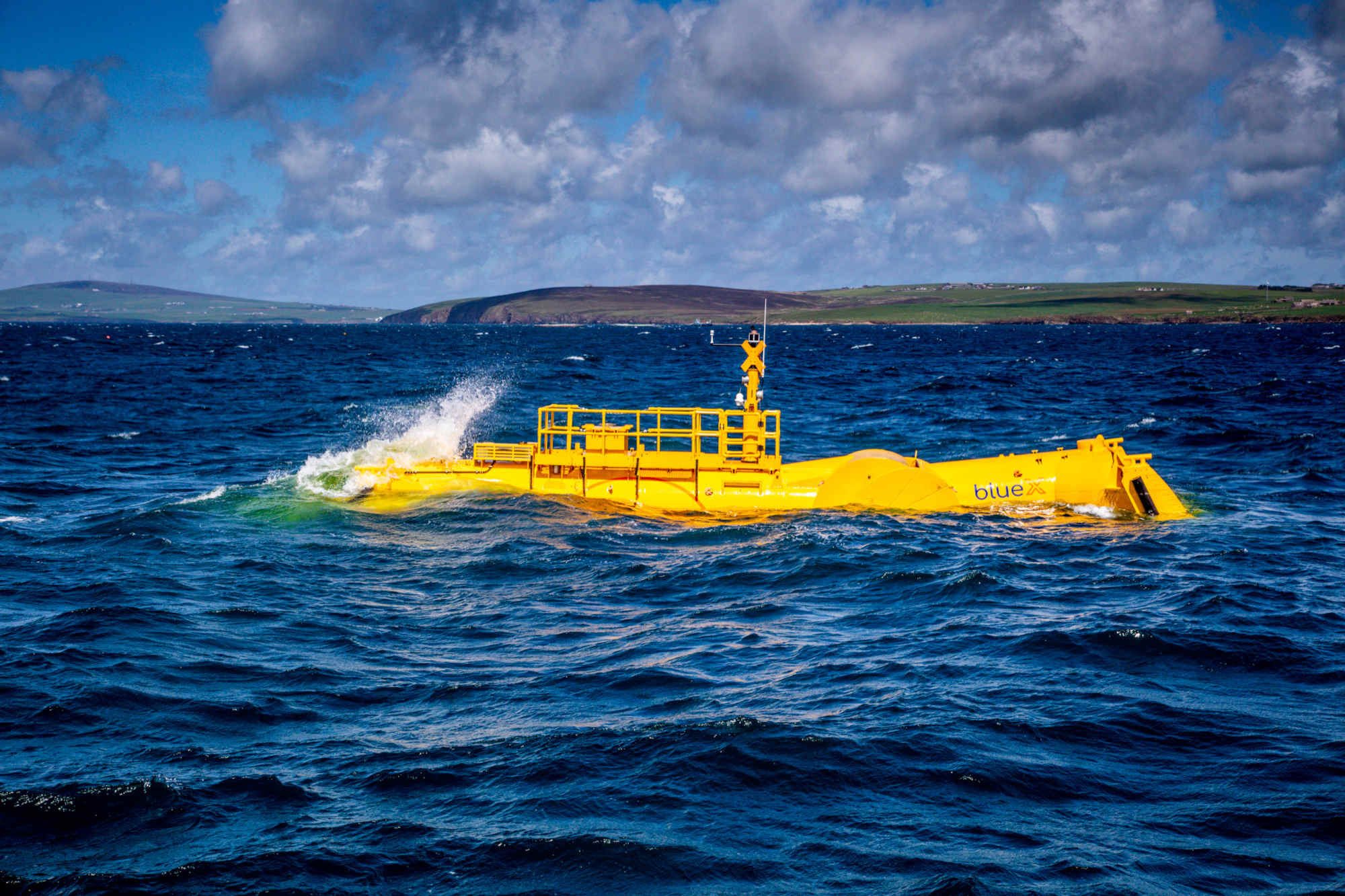
For EMEC’s MacKenzie, the latent energy of the world’s oceans represents a chance for her own country to make up for past mistakes in the race for renewables. She recalled an incident in 1987, when the U.K. secretary of state for energy, Cecil Parkinson, spoke in the House of Commons about the potential of wind power. Sure, it was a good idea in principle, he said, but he “cannot see the day when we shall be generating large quantities of electricity from wind.”
The U.K. hesitated — and Denmark jumped in. “Denmark absolutely won that race,” MacKenzie says. “And this is what we’re really keen to make sure doesn’t happen with wave and tidal.” (Today, wind power provides about one third of the U.K.’s electricity production. About 40 percent comes from coal, oil, and natural gas, while nuclear power and bioenergy provide about 15 percent and 11 percent respectively.)
For Scott, the power latent in the world’s oceans is an important resource in the fight against catastrophic climate change, even if its total contribution remains small compared to that of other renewables. “Inaction is not an option,” he says.










